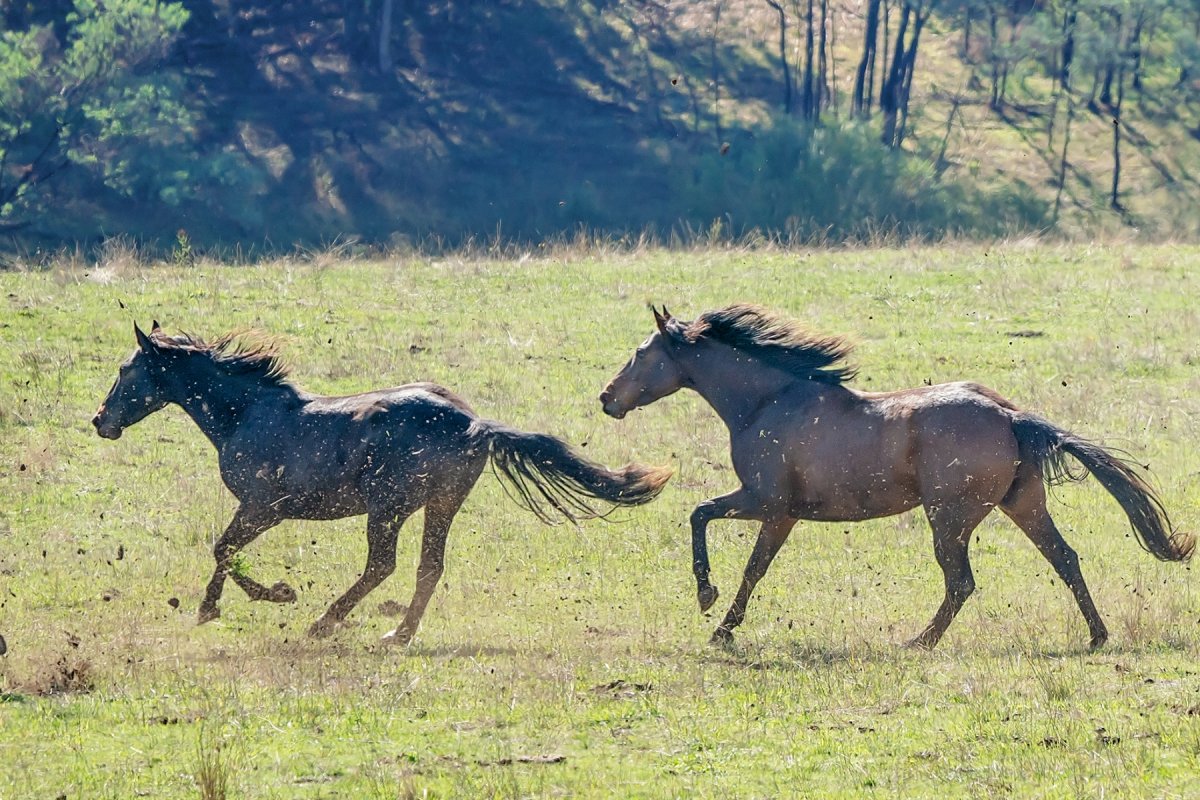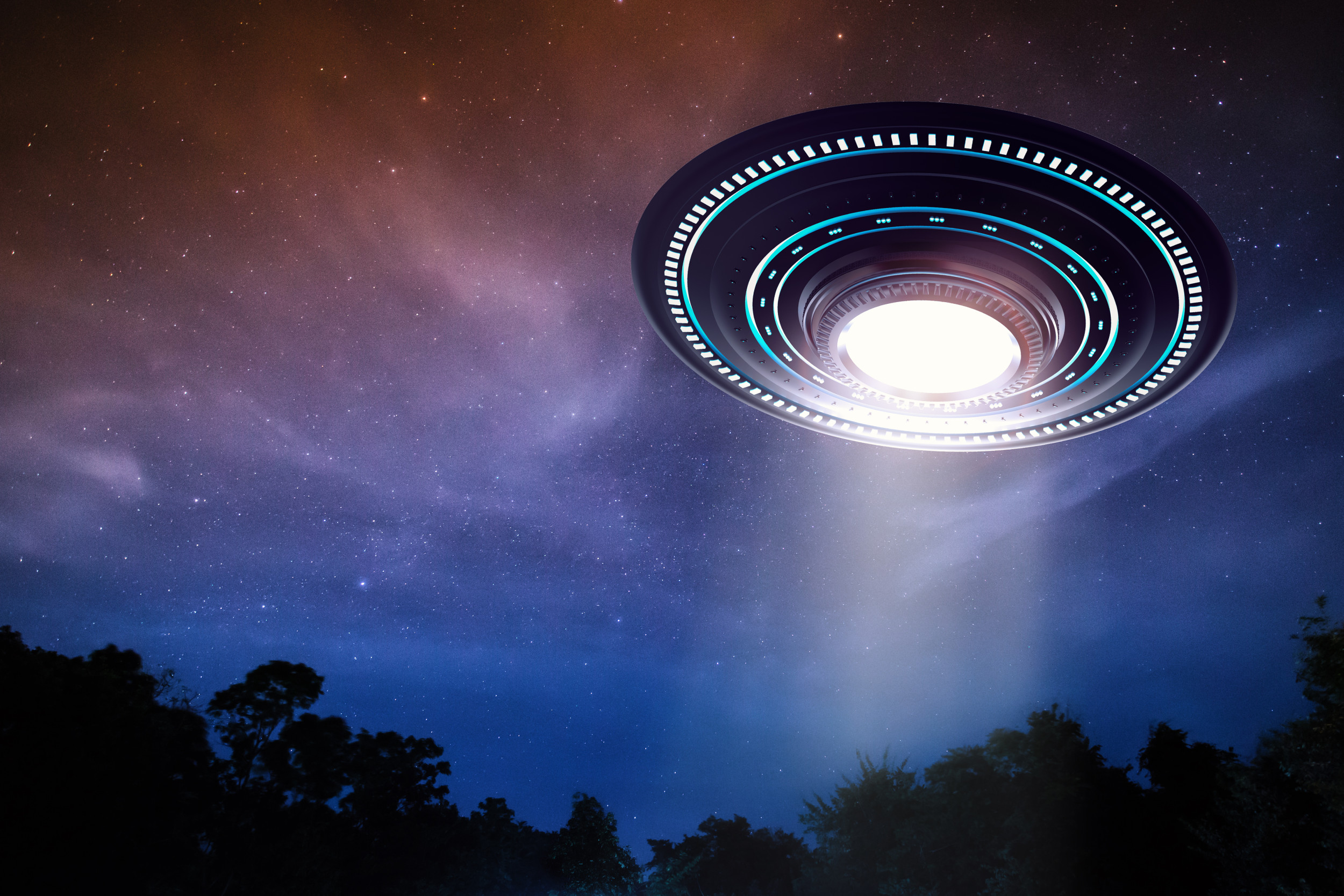Around 14,000 feral horses roaming the plains of Australia are due to be culled by shooting them from helicopters.
An estimated 17,432 feral horses, known to Australian locals as "brumbies," are loose in Kosciuszko National Park, a 2,600-square mile national park in southeastern New South Wales (NSW).
To achieve a reduction of these numbers to 3,000 by June 2027, as is required by law, aerial culling has now been introduced into the management repertoire, allowing for the horses to be shot from helicopters.

These horses are considered an invasive species in Australia, numbering up to 400,000 across the whole country. They descend from horses brought over by European settlers. They pose a threat to local ecological systems due to their grazing and trampling of the ground and native plant species, particularly in the Australian Alps, according to the Invasive Species Council, which aims to "seek stronger laws, policies and programs to protect nature from harmful pests, weeds and diseases."
"Horses first arrived in Australia in 1788 with the First Fleet. Escaped and abandoned horses were first reported in the Alpine regions of Australia in the 1830s. These feral horse populations were regarded as pests and were culled because they were perceived as competitors for grass for sheep and cattle," Maggie J. Watson, a senior lecturer in ornithology and zoology at Charles Sturt University in Australia, told Newsweek. "The horses in the Alpine regions of Australia are not a breed. There are no genetic traits to distinguish these horses from domestic horses. Since the 1960s, people have illegally released purebred Standardbred and Paint stallions to 'improve' the conformation and colors of these feral horses."
In Kosciuszko National Park, there were an estimated 14,501 and 23,535 horses in 2022, according to a NSW National Parks and Wildlife Service survey, with that number being revised to between 12,934 and 22,536 in the 2023 survey. In 2016, there were around 6,000 in the park.
"Horses are particularly bad for the Alpine regions because the animals walk on well-traveled pathways, compacting the soil, causing runoff, and, around waterways, leaving pug marks," said Watson. "They graze and remove plant material necessary for small, native animals to survive (mountain pygmy possum, alpine she-oak slender bluetongue, broad-toothed rat), they selectively graze on alpine plants...they wallow and cause damage to waterways (impacting native galaxias fish and freshwater spiny crayfish)."
Other methods have been used to reduce the numbers of these horses for years, including trapping, rehoming, tranquilizing and ground shooting, but these have not been successful at making much of a dent in the population. Trapping in particular was considered expensive and inhumane, as the horses ended up being transported long distances and ending up in slaughterhouses.
"Active capture requires a lead horse and trained personnel [and] works very well. However, the same people who destroy traps seek out the trappers, slash their tires, make death threats towards the trappers, and the NSW government can no longer safely employ people to do this work," Watson said. "Rehoming works well for a small number of horses; rehoming these horses takes a tremendous amount of work from volunteers, and there simply are not enough homes in Australia for as many horses as can be captured and trained.
"Ground shooting [is] very effective in areas where people can get to; the Alpine region of Australia is very mountainous, with few roads and little access. Getting shooters to all areas of the park is logistically impossible."
Now, the government hopes that aerial shooting from helicopters will help to reduce the brumby population significantly.
"The survey results indicate it will not be possible for the NSW government to meet the mid-2027 deadline of 3,000 horses under the current trajectory without aerial shooting," a statement from the NSW government said.
Some 270 horses were shot over two days in a preliminary aerial shooting program that took place in November. In 2019/20, 99 horses were removed via trapping, and 787 in 2020/21.
During the aerial shooting program, two helicopters were used, each containing a veterinarian. According to the government statement, there were "no adverse animal welfare events" and "no horses were non-fatally wounded," meaning that the horses died quickly with little suffering.
All the shot horses were assessed by vets from helicopters, the statement explained, and 43 were inspected by vets on the ground.
"This reduction of the feral horse population has occurred despite very good seasonal conditions in recent years which would normally have led to a population explosion," Jack Gough, an advocacy director at the Invasive Species Council, told local news outlet Sydney Morning Herald. "No one likes to see animals killed, but the sad reality is that we have a choice to make between urgently reducing the numbers of feral horses or accepting the destruction of sensitive alpine ecosystems and habitats, and the decline and extinction of native animals."
"We may not like it, but culling by highly trained professionals is the only viable way of reducing numbers and saving the national park and our native animals that live there."
The locals appear to echo that statement, local news ABC South East NSW reported, with the NSW government having received over 11,000 community submissions regarding the new tactic, of which a large majority supported reintroduction of aerial shooting.
Do you have a tip on a science story that Newsweek should be covering? Do you have a question about feral horses? Let us know via science@newsweek.com.
Update 12/07/2023, 12:50 p.m. ET: This article was updated to include comment from Maggie Watson, senior lecturer in ornithology and zoology.
Uncommon Knowledge
Newsweek is committed to challenging conventional wisdom and finding connections in the search for common ground.
Newsweek is committed to challenging conventional wisdom and finding connections in the search for common ground.
About the writer
Jess Thomson is a Newsweek Science Reporter based in London UK. Her focus is reporting on science, technology and healthcare. ... Read more
To read how Newsweek uses AI as a newsroom tool, Click here.








